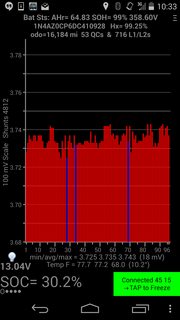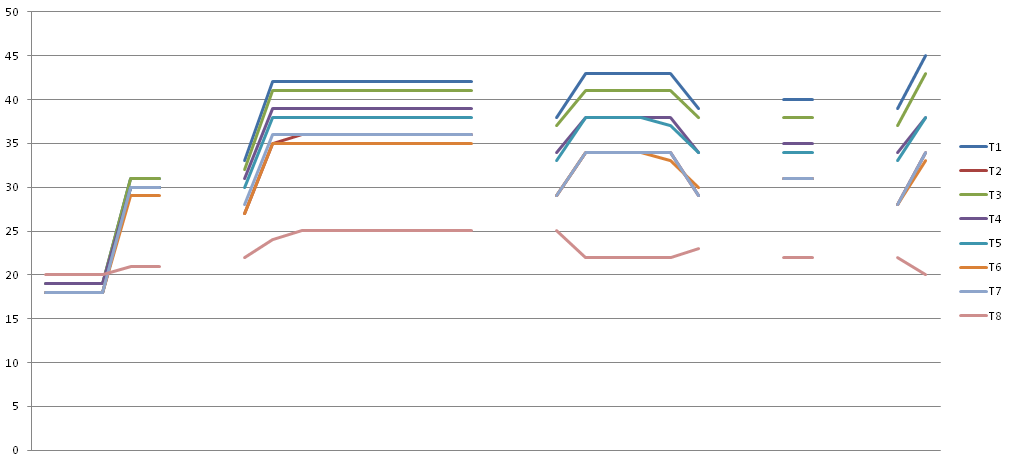Hi Elmil,
Thanks for the latest data. I too am keeping a weekly record. I will post the latest data below.
Your recent deterioration seems to fit the same rough pattern for your car.
you have used the car 5% more and deterioration is 5% worse.
Even the best and worst cell numbers are the same.
I will plot a time series for some different cars later.
And start a new thread for analysis of battery data.
For your car
t=1443hrs, max det=9.3%, min det=8.3%
t=1522hrs, max det=9.8%, min det=8.4%
For my car
t=308hrs, max det=2.5%, min det=0%
t=334hrs, max det=2.5%, min det=0%
t=346hrs, max det=2.5%, min det=0%
t=354hrs, max det=3.5%, min det=0%
Complete data for my car from today's reading
Fri Nov 6, 23c, 81% SOC, odo 7750km, range 153 km
2101
7EC 21 9B 23 28 23 28 03 00
7EC 22 11 0E EC 14 14 14 14
7EC 23 14 14 14 00 15 C7 04
7EC 24 C6 09 00 00 09 00 00
7EC 25 B8 86 00 00 B7 38 00
7EC 26 00 42 80 00 00 40 12
7EC 27 00 13 FC 5A 45 01 80
7EC 28 00 00 00 00 03 E8 00
2105
7EC 21 00 00 00 00 00 14 14
7EC 22 14 00 00 00 00 23 28
7EC 23 23 28 00 01 55 00 00
7EC 24 00 23 02 00 01 53 A3
7EC 25 00 00 00 00 00 00 00
7EC 26 00 00 00 00 00 00 00
edit: corrected odometer reading to 7750km





